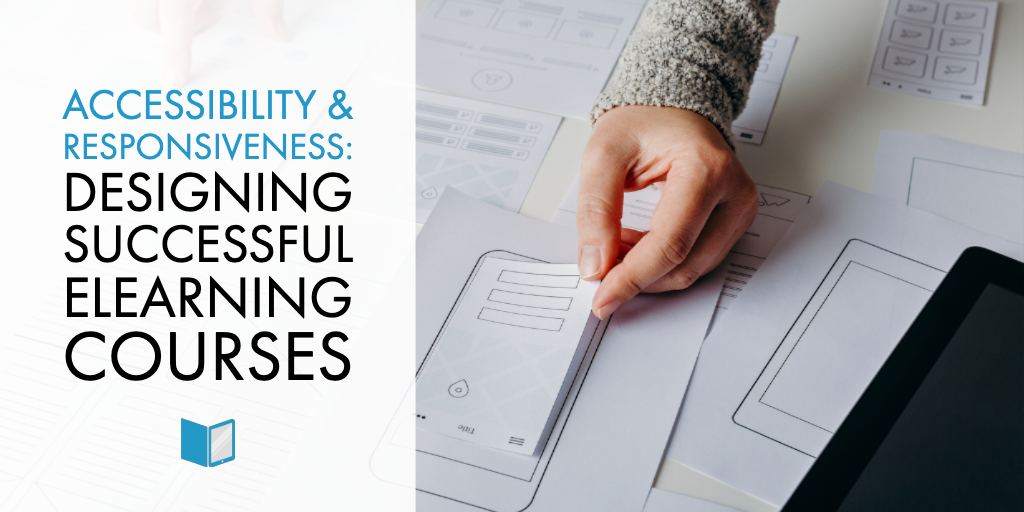In 2017 - the most recent year for which data is available - 77% of US companies reported using eLearning. With IBM alone reporting $200M in savings from switching to eLearning versus traditional learning, that percentage is no surprise! With this level of technical evolution in the corporate training space, gone are the days of simply slinging text onto Powerpoint slides and printed employee handbooks.
When designing eLearning courses, however, there are a couple of key design elements that are requirements by today's standards. You’ll want to make sure that every learner has the same advantages and experience regardless of the unique situation they may be in.
Accessibility in eLearning Courses
The word “accessibility” has a few meanings, and when it comes to anything technology related the waters can be a bit muddied. Sometimes in the eLearning world, “accessibility” is used to describe how readily available something is. In this case, we’re referring to the content being compliant with various regulations, such as the Americans with Disabilities Act (ADA) regarding those with disabilities and impairments.
The ADA dictates that content should be accessible to those with disabilities. That means learners with visual impairments should be able to listen to the information or increase the font size so that it’s legible, while those with hearing impairments should be able to clearly view the content. Additionally, you should choose colors that make the content easy to read while considering those with color blindness or dyslexia, which can be affected by hard-to-read fonts.
Since eLearning has been leveraged by institutions of higher education for some time now, businesses looking to create or adapt their eLearning materials in accordance with these standards can take a digital page out of a university or college's rulebook. In addition to mindfulness around text and colors, treatment of your overall content flow, formatting, navigation, embedded or attached documents and word choice must also be considered.
Responsive Content is Flexible Content
Once you’ve covered content accessibility for your learners, you’ll want to consider the ways in which your learners situationally view it. Here’s what we mean.
People don’t interact with their large desktop monitors the same way they do with their smartphones. In fact, it’s an entirely different experience. For starters, think about how smartphone users navigate on the Internet - there’s no mouse to click or a full keyboard to type responses. To make sure your learning content is responsive on a hand-held device, make buttons large enough to view on a smaller screen and tap with a finger.
It’s also important to keep in mind that many learners will probably be switching back and forth between different devices depending on where they are and what they’re doing that day. Providing employees with the ability to pick up, on their phone, where they left off on their computer is a simple yet effective way to enable them to complete their training as expected.
In fact, 70% of learners feel more motivated accessing training on a mobile device compared to a desktop. To summarize eLearning Industry's tips on providing a robust mobile experience, you should:- Test your content with focus groups early in the development process
- Start the design process on the smallest screen sizes, building up to larger ones
- Optimize file sizes for mobile network bandwidth
- Keep navigation simple
Contact us to learn more about designing accessible, responsive training content for your employees.






Leave a comment